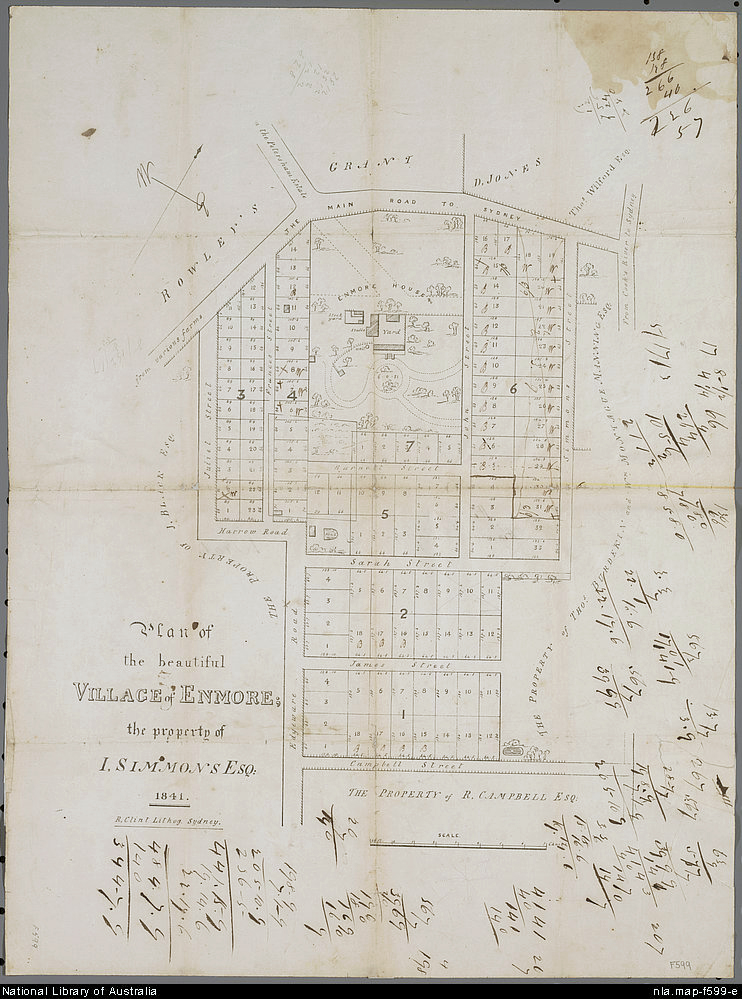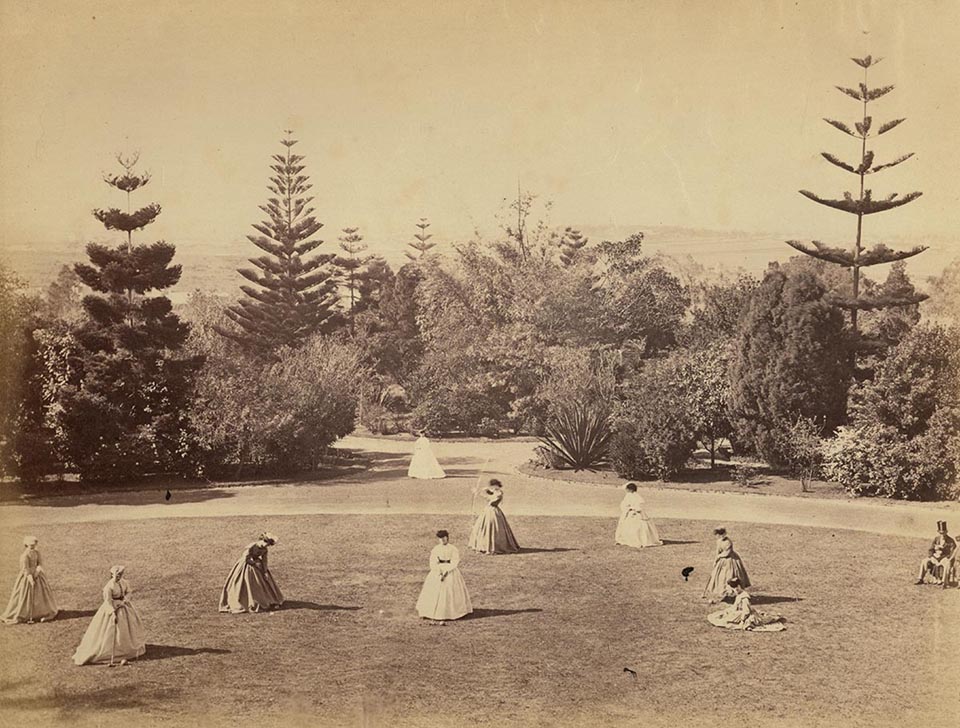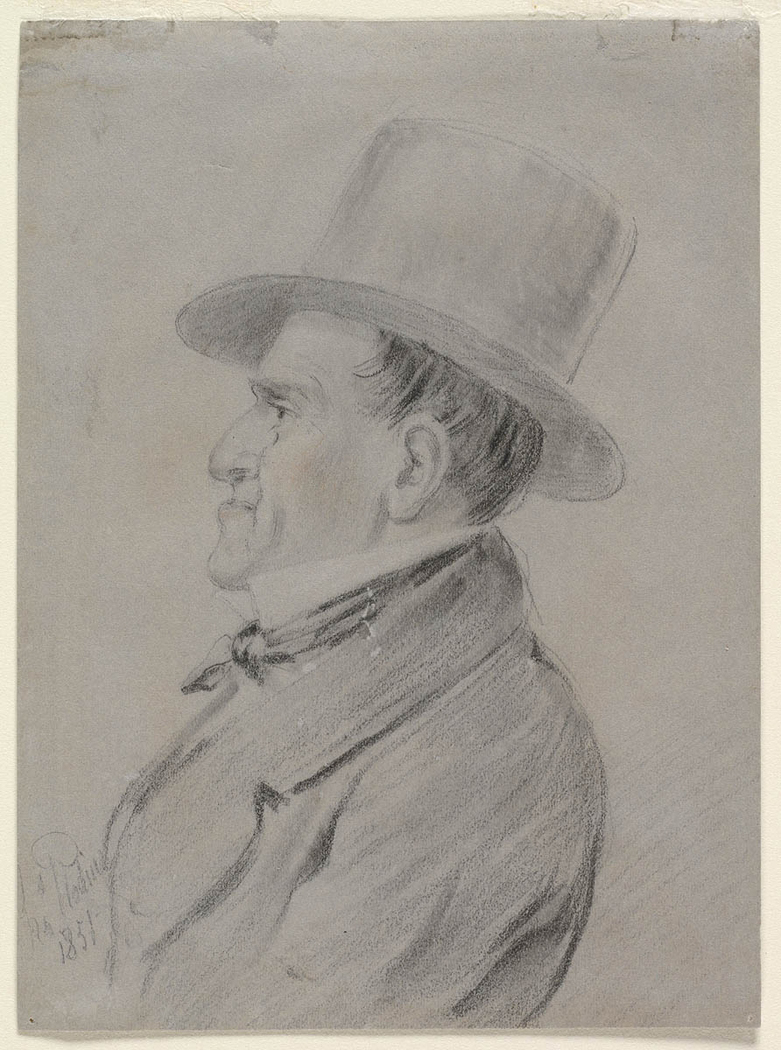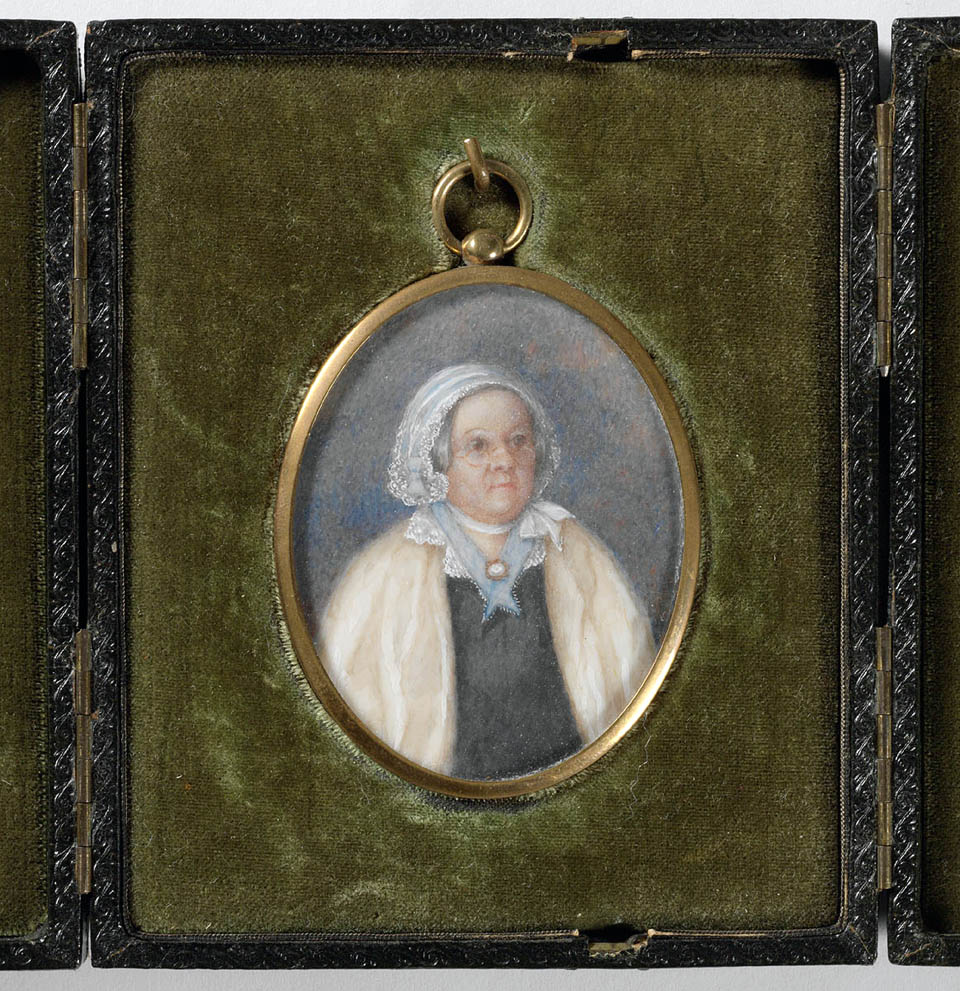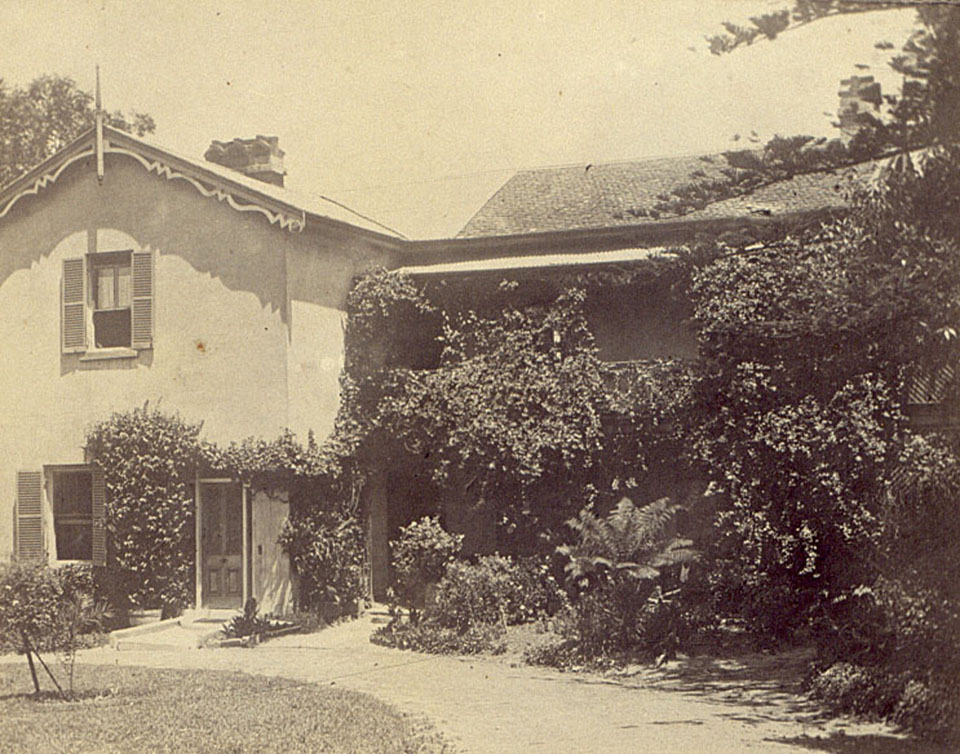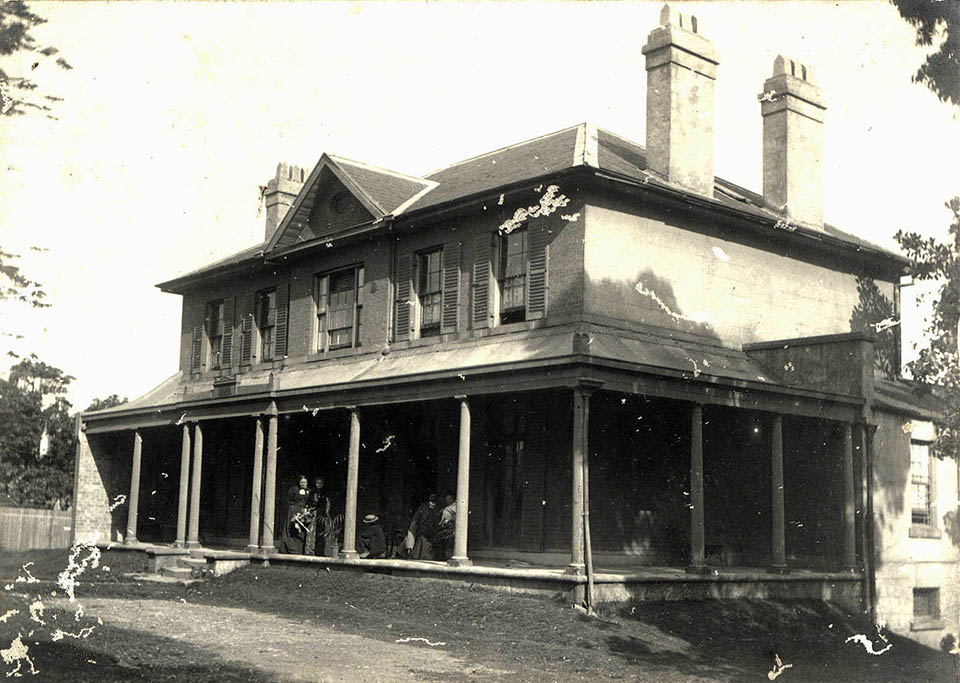The Dictionary of Sydney was archived in 2021.
Enmore
Citation
Persistent URL for this entry
To cite this entry in text
To cite this entry in a Wikipedia footnote citation
To cite this entry as a Wikipedia External link
Enmore
Enmore is in the Marrickville local government area in Sydney's inner west, five kilometres from the Sydney central business district. The traditional owners of the land are the Cadigal people of the Eora nation. Convicted felons who transformed into millionaires, retired sea captains, merchants, judges, bushrangers and rock music have all contributed to Enmore's colourful history.
Enmore House
Enmore [media]took its name from Enmore House. The origins of the name can be traced back to the village of Enmore in Somerset, England. Enmore House, designed by John Verge, was built in 1835 for Captain Sylvester Brown, a master mariner with the East India Company. Brown named it after an estate in the West Indies owned by James Cavan, an English business associate. Cavan in turn had named his estate after Enmore in Somerset.
Captain Brown's son, Thomas Alexander Browne, wrote a number of Australian classics under the name Rolf Boldrewood. His most popular novel was Robbery Under Arms.
The Enmore House estate was subdivided and auctioned in May 1841. The sale advertisement described the village of Enmore as
'only about one mile and a half from the Sydney boundary … to attempt anything like an accurate description of the beauty of its situation would be truly a difficult task'
The auctioneer suggested that those with the means of riding the 15-minute journey from Sydney to Enmore should do so and the more humble pedestrian could reach it on foot in about half an hour. A special luncheon on the morning of the sale also provided encouragement to potential buyers. Enmore, a pretty village bordering Newtown, was described as cultivated and fenced into paddocks or tastefully laid out in fruit, flower and vegetable gardens.
The fortunes of the Josephsons
Enmore House and its [media]extensive grounds were purchased by Jacob Josephson, a jeweller. Josephson had been transported to Australia with a 14-year sentence for having fake £1 notes and stolen goods in his possession. In 1820 Josephson received a conditional pardon from Governor Macquarie. On hearing the good news, his wife Emma and their sons Joshua, six, and Lewis, two, set sail to join him.
Josephson's business ventures had their ups and downs. He was sentenced in 1826 to the debtors' jail in George Street, Sydney. Josephson was defended by a young solicitor, William Charles Wentworth, who eventually secured his release and managed to collect debts owed to Josephson. By the time of his death in 1845 at Enmore House, Josephson had amassed a considerable fortune, mostly through real estate investments. Josephson even purchased some of Wentworth's own estate at Petersham, giving it the name Lewisham, probably after the London suburb. Enmore House was left to his eldest son, Joshua Frey Josephson, a prosperous solicitor, businessman and judge.
[media]The 'convict stain' of his father did not interfere with Joshua Frey Josephson's distinguished career. He became a member of the New South Wales Legislative Assembly and the solicitor-general of New South Wales. In 1848 Josephson was elected Mayor of Sydney.
Judge Josephson was reputedly attacked by bushrangers on his way home one evening. Enmore was sparsely settled and still heavily timbered, providing good cover for marauders. After this unnerving experience the judge's servants would shut and barricade every door and window of Enmore House at sunset. Anyone wishing to enter or depart had to do so by means of a ladder to an upstairs window. The ladder was withdrawn precisely at 10 pm. The house remained in a state of siege until morning, often with reluctant guests.
Mary Reibey, businesswoman
[media]Another notable resident of Enmore was Mary Reibey (nee Haydock), Sydney's most notable businesswoman of her time. Reibey had also been a convict. She was a Lancashire lass, who ran away from home and disguised herself as a boy. She took the name of James Borrow, stole a horse and was sentenced to death. When it was discovered that young James was actually a girl of 15, the sentence was commuted to transportation for seven years. On her arrival in Sydney aboard the Royal Admiral she promptly married Captain Thomas Reibey, a young Irish marine, on 7 September 1794 in the presence of Reverend Richard Johnson, the first minister of the colony.
Captain Reibey was granted land on the Hawkesbury River and started a river cargo business to Sydney. The business prospered and he went into partnership with Edward Wills. Their trading activities extended to China, India and the Pacific islands. In 1811 Captain Reibey and Wills died within months of each other. Mary Reibey was left a wealthy widow, with seven children and sole control of numerous business concerns. She was no novice at running the family business, having coped through the many absences of her husband.
Reibey's business empire flourished. She [media]moved to Enmore in the 1840s and established herself comfortably in Reiby House. The property had a frontage of almost two kilometres along Enmore Road. Reiby House was a grand, two-storey Georgian villa with tight security against bushranger incursion. Shutters fitted with heavy iron bolts ran the length of the house, both inside and out. Secret bells were installed in some of the shutters so when the window was opened the alarm was given in another part of the house. Presumably Mary's servants were ready to repel any invader.
From villa estates to suburban landscape
Bailliere 's Gazetteer described Enmore in 1866 as consisting of suburban residences and the farms of a few dairymen. A more densely populated suburb emerged after the demolition of Enmore House in 1883 for 530 building sites. Enmore's avenues of fig trees, orchards and gardens were soon replaced with shops and houses. The opening of a steam tramline up Enmore Road in the 1880s also brought more shops.
Enmore's transformation from an area of large villa garden estates to a suburban landscape finally occurred with the demolition of Thurnby in 1910. Thurnby was built in the early 1850s for Thomas Chaplin Breillat, a prosperous merchant. Breillat was the founder of the Sydney Chamber of Commerce, manager of the Sydney Flour Company and a founding director of the Australian Joint Stock Bank. In the 1880s Thurnby was bought by Judge William John Foster, who served several terms as New South Wales attorney-general. Foster, a militant temperance advocate, was aptly nicknamed 'Water Jug Foster' by his political opponents. Ironically Thurnby had originally been the site of one of the first pubs in the area. The Halfway House Inn catered for bullock teams passing along Enmore Road on their way south.
The only [media]surviving reminder of the villa estates of Enmore is Stanmore House, located on the corner of Enmore Road and Reiby Street. It was built c1847 as a wedding present for Mary Reibey's daughter, Elizabeth Anne, who was unhappily married to Captain Joseph Long Innes. Captain Innes was an alderman of the first Sydney City Council. Shops were built in front of the property in the 1930s and the house was converted to flats. Stanmore House was altered significantly but still retains part of its original fabric, detail and joinery.
Mary Reibey's own home, Reiby House, survived until the 1960s when it was demolished to construct a block of high-rise units for low income earners.
Enmore Theatre
The fortunes of Enmore have always been closely linked with Newtown, its suburban neighbour. Newtown's contemporary development as an arts and entertainment hub stretches along Enmore Road.
Enmore Theatre opened in 1912 as a photo-play theatre screening 'exclusive and refined' silent movies accompanied by a concert orchestra. It was run by the Szarka brothers, a well known theatrical family. William Szarka, an alderman on Newtown Council from 1914 to 1928, had himself crowned King of Newtown on stage at the Enmore Theatre in the style of a pageant, complete with pageboys and regal robes.
Enmore Theatre has been altered several times. In 1969 it was bought by the Louis Film Company, renamed the Finos Theatre and used to screen Greek language films. This was very popular in an area where 13 per cent of the population was born in Greece. Following a decline in audiences, the Finos Theatre closed. It was refitted and reopened in 1985 with its original name of Enmore Theatre.
Enmore Theatre is Sydney's longest running live theatre. It has been the venue for many notable plays, including the iconic Wogs out of Work. Mick Jagger chose the Enmore Theatre for one of the Rolling Stones' 2003 Australian appearances as his mother, Eva Jagger (nee Scutts), had been born in Petersham and lived in Marrickville before the family emigrated to England. Those unable to get tickets gathered outside the theatre. Enmore rocked.



